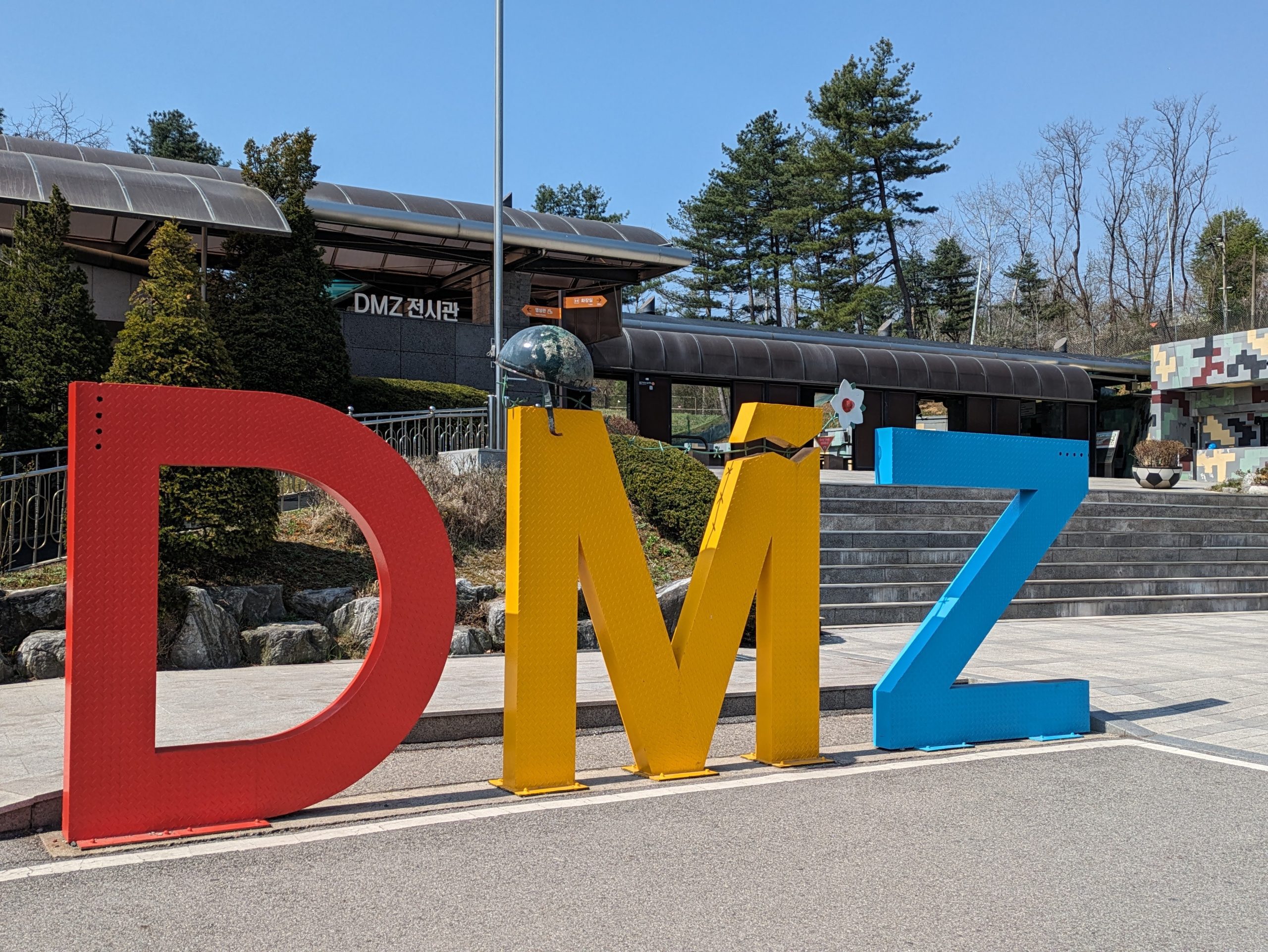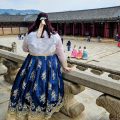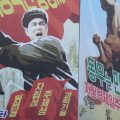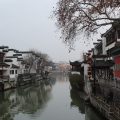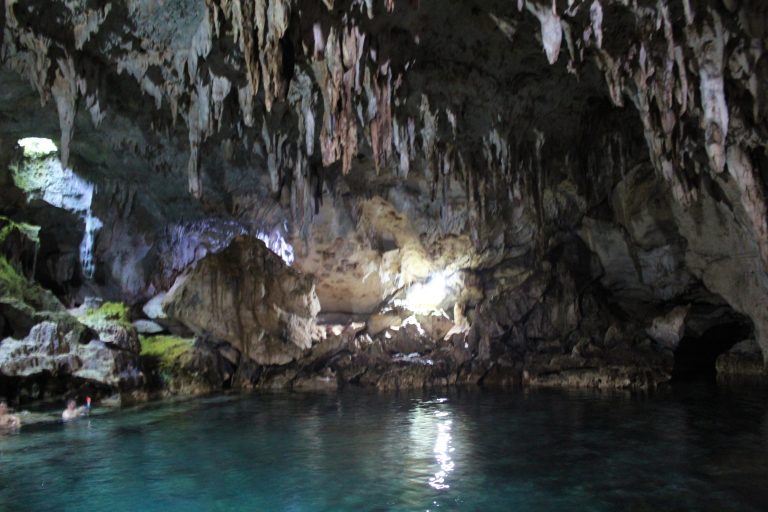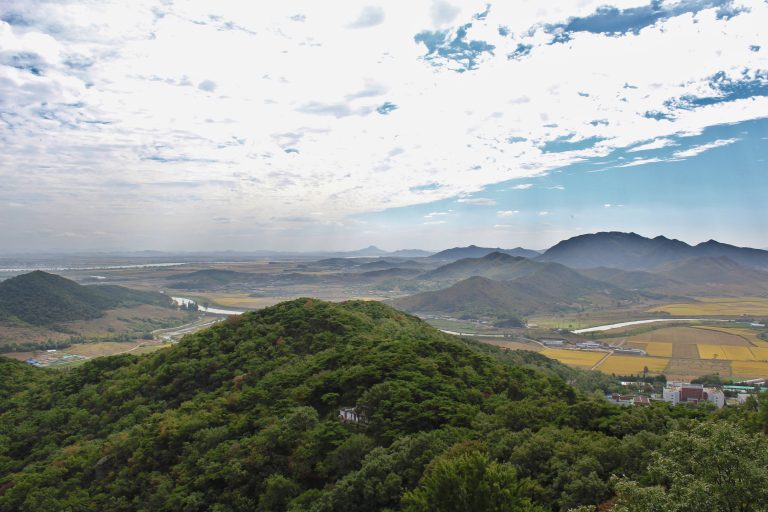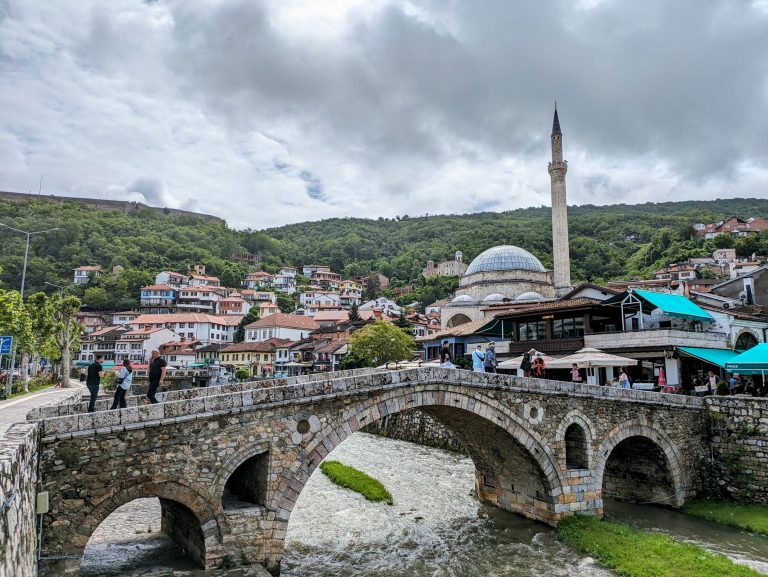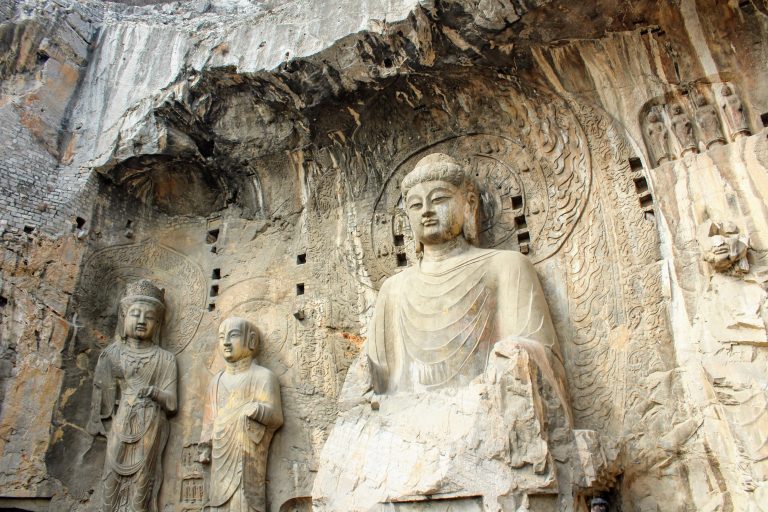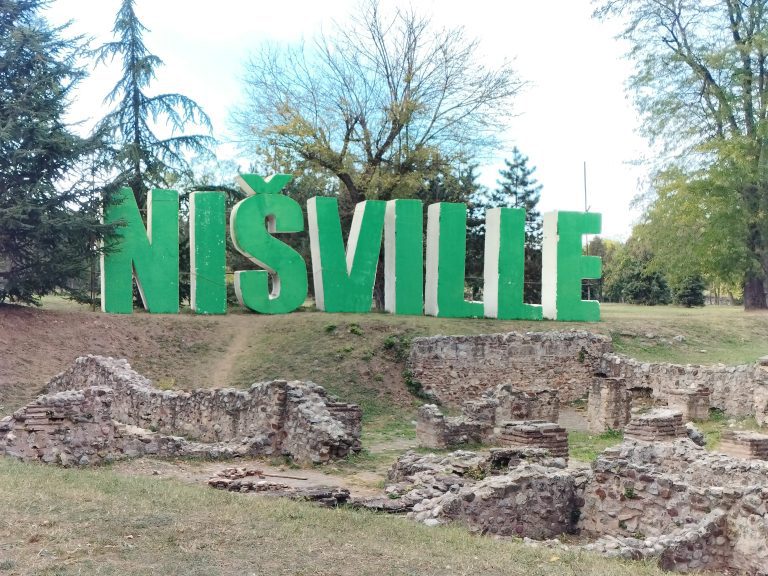A day trip to the DMZ from Seoul
One of the main things my sisters wanted to do in Seoul was to take a day trip to the DMZ. During our trip, the JSA area was still unavailable to visit. I personally didn’t really think the DMZ was that interesting. However, I think that’s partially because I’ve actually visited North Korea so didn’t have the same excitement of being able to see it and learn about it. Indeed, some of the things our guide said about it were not true, so that was slightly disappointing. Still, it was interesting learning more about the history and getting to see some of the key sites.
For many people this is the closest they will ever get to North Korea so here’s what to expect on a day trip to the DMZ.
Choosing a tour
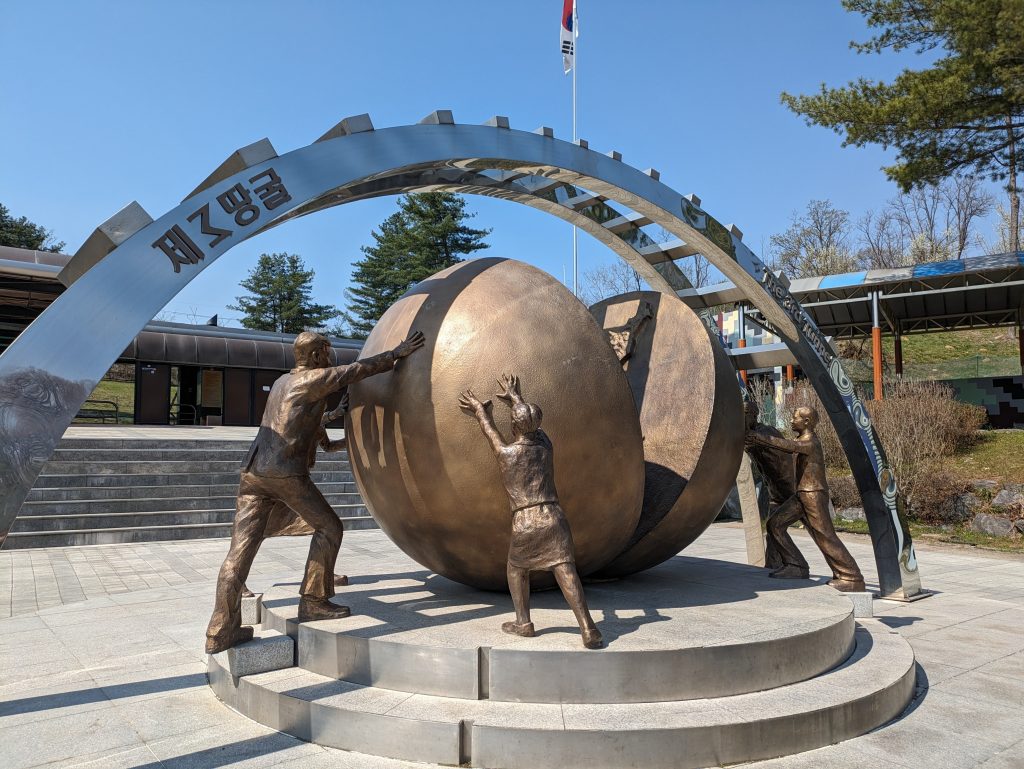
It is not possible to do a day trip to the DMZ by yourself. You need to visit as part of a tour, and you need to book in advance. If anywhere is offering a private tour, that just means you’ll get a guide to yourself. But you’ll still end up on a bus with other tourists, so just save your money and book a group tour.
I went with VIP Travel, who were fantastic. It was meant to include hotel pickup, but they changed it the day before to meeting at a subway station, an hour earlier. Although we weren’t too happy about that, we ended up being the very first bus allowed into the DMZ, which meant we were constantly ahead of everybody so there were no crowds.
When choosing a tour, I would recommend choosing a pickup point rather than hotel pick up for this reason. Our guide explained that there was a limit on how many buses could enter each day, and we each received a time slot. If your bus arrives later, then there’s a chance they’ll be out of time slots for the day.
Imjingak Park
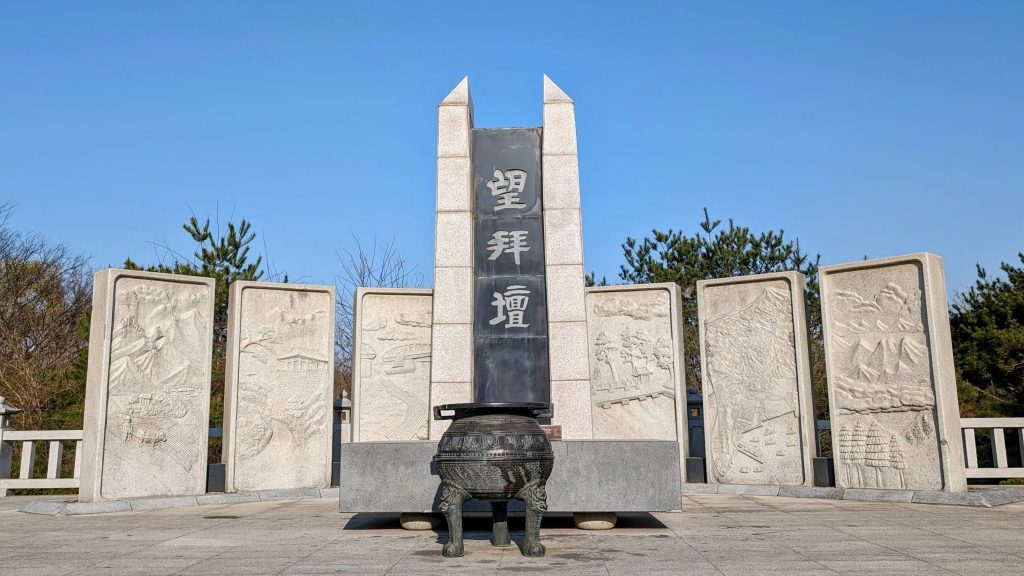
The first stop on every day trip to the DMZ is the Imjingak Park. This is the closest point to the DMZ that you can reach without going through the military checkpoints. There is a memorial called Mangbaeddan which allows Koreans to perform traditional ceremonies. As they can’t visit the graves of ancestors, they can instead visit here and bow towards the memorial to represent their family.
This will be the first stop on all tours, as it’s where you get your time slot for entering the DMZ. Our guide literally ran for the building as soon as we arrived to be first in line. The first entry times aren’t until 9am so you will have time to explore the park. Our guide gave us a small tour of the area, and shared facts about North Korea and the border.
This area has some souvenir shops that sell North Korean currency, which was very popular. The queues for this can get very long, so if you want some, make sure to line up early. We arrived before they opened so waited outside one to see what they had. The currency is quite expensive – and personally I don’t think it’s worth it – but it seemed very popular.
We met back at the bus and it was time to head to the DMZ. We stopped at the checkpoint so the guards could check our passports . Because the first bus didn’t have the right paperwork, we ended up being the first bus allowed inside. We crossed the bridge and were now officially inside the DMZ.
3rd Infiltration Tunnel
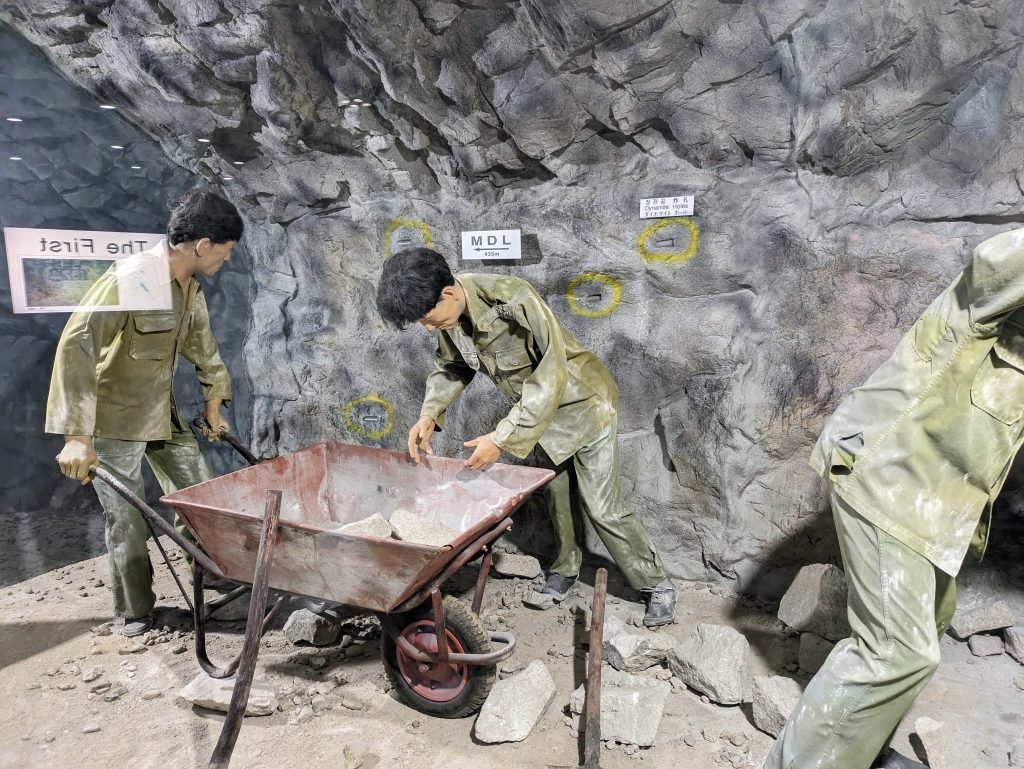
After officially entering the DMZ, we made our way to the 3rd Infiltration Tunnel. First we went to the theatre to watch a short video about the history of the conflict and the tunnel that was built. After that was a small museum section, with replicas of the tunnel. You aren’t allowed to take phones or cameras into the tunnel itself, so this is the only option for photos.
After that, we crossed the parking lot to the other building which is the entrance of the tunnel. They give a lot of warnings about how steep the climb back up is, and how you shouldn’t attempt it with various medical conditions. I decided that even though I’m awful at climbing uphill, I’d still give it a go, and it ended up being not that bad at all!
When you enter the building, the first thing you need to do is put your belongings into a locker. You can’t bring any bags, phones or cameras into the tunnel. You can bring a bottle of water with you: definitely make sure you have one, as it will help on the climb back up! Once going through a security checkpoint, you then are given a yellow helmet. You need to wear this as once you get into the tunnel itself, the ceiling is very low at points and you’ll need to duck.
Inside the tunnel
The slope is 350m. There are signs on the wall to let you know how far you are every 50m, which really helps keep you going on your walk back up. The walk down is also rather challenging due to the steep incline. Once at the bottom, you are then able to walk along a section of the tunnel until you reach a barrier. This final section is very narrow with low ceilings – there’s only just enough space for two people to pass each other. If you’re claustrophobic then I think you would struggle with this section.
As we were the first ones there, it meant that it was empty when we visited which helped feel less crowded. On the way back up, all the other tour buses had started to arrive, and it was much busier. I was very grateful that we were so early, as I don’t think I would have enjoyed it with so many other people around.
After reaching the end of the tunnel, there is a barricade and you can look through a window showing another barricade. Honestly, it’s a little bit disappointing. You walk all the way down and along and then it’s pretty much “Okay, let’s go back now,” as there’s not much to see. I think the main highlight for a lot of people is actually being in the tunnel itself, knowing it was made by North Koreans.
Dorasan Observatory
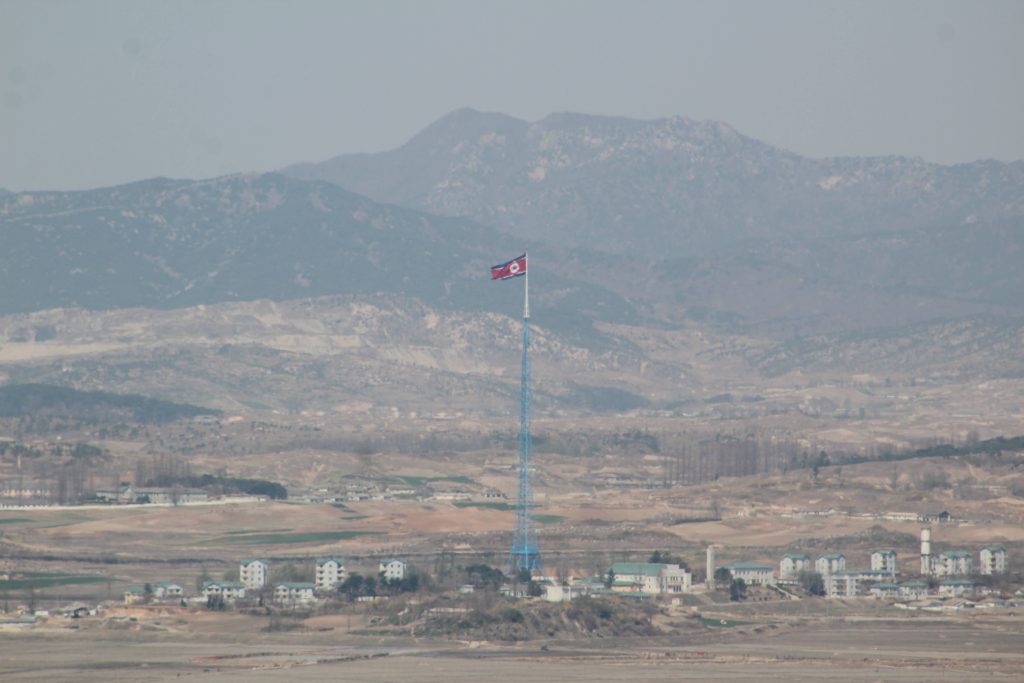
Dorasan Observatory was probably my favourite part of the trip. The observatory is on a hill overlooking the DMZ, and gives you views across into North Korea. There are lots of binoculars you can use, and our guide explained several of the things that you could see. The main sight was the fake North Korean village in the DMZ. It is very easy to spot, thanks to the huge flagpole. Further away, you can see the town of Kaesong. Having visited Kaesong when I was in North Korea, I found this particularly fascinating to look at.
As we were ahead of the other groups, it was easy to get a pair of binoculars. There weren’t that many though, so if you arrive during a busy time it might be hard to get a pair to use. I would recommend bringing a zoom lens with you for this part of the tour.
Imjingak Park, again!
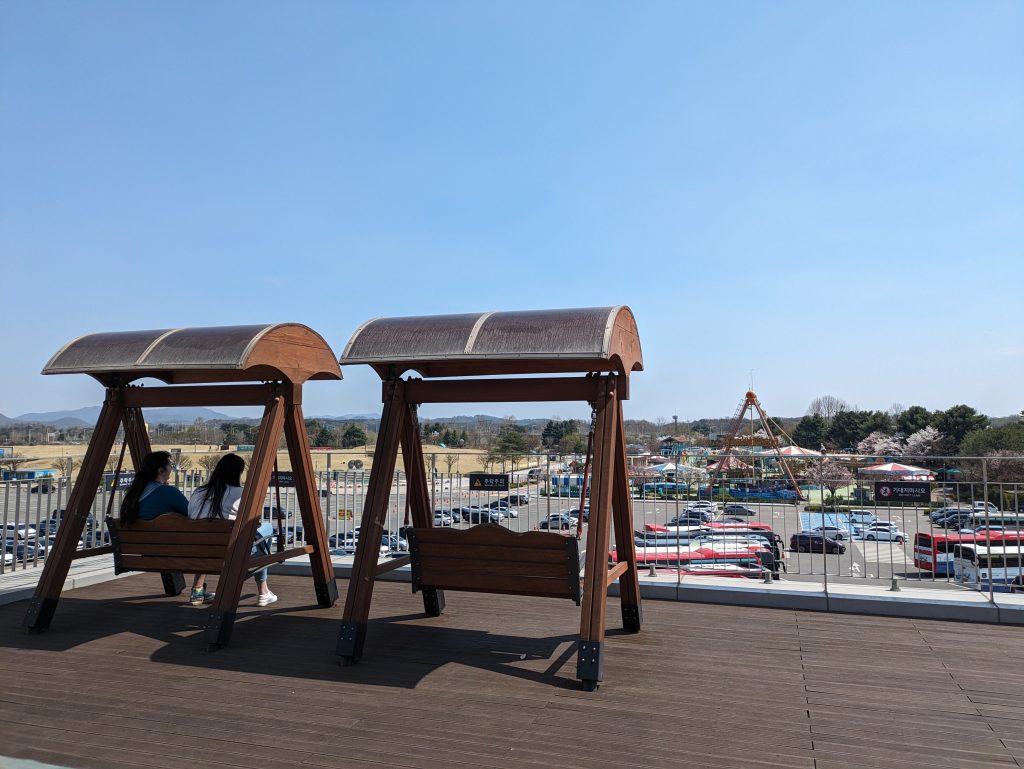
On our way out of the DMZ, we stopped at a small shop where you could buy souvenirs and produce. Our guide explained that the farmers can’t use fertiliser so all the produce is organic. After the shopping stop, we returned to Imjingak Park for the second time. This is so that those who wish to take the Gondola can do so. It takes you across the river where you can walk around for a short while before returning. I decided to explore more of the park that I didn’t have the chance to see the first time. You also get some more time to do some shopping for souvenirs.
We had around an hour here before heading back to Seoul. I would have preferred a shorter stop, as by this point we were all quite tired. We made it back to the city centre by half past 2. This meant that we still had plenty of time to explore in the afternoon. We had a short nap before heading our to see Namsam tower for sunset.
Is a day trip to the DMZ worth it?
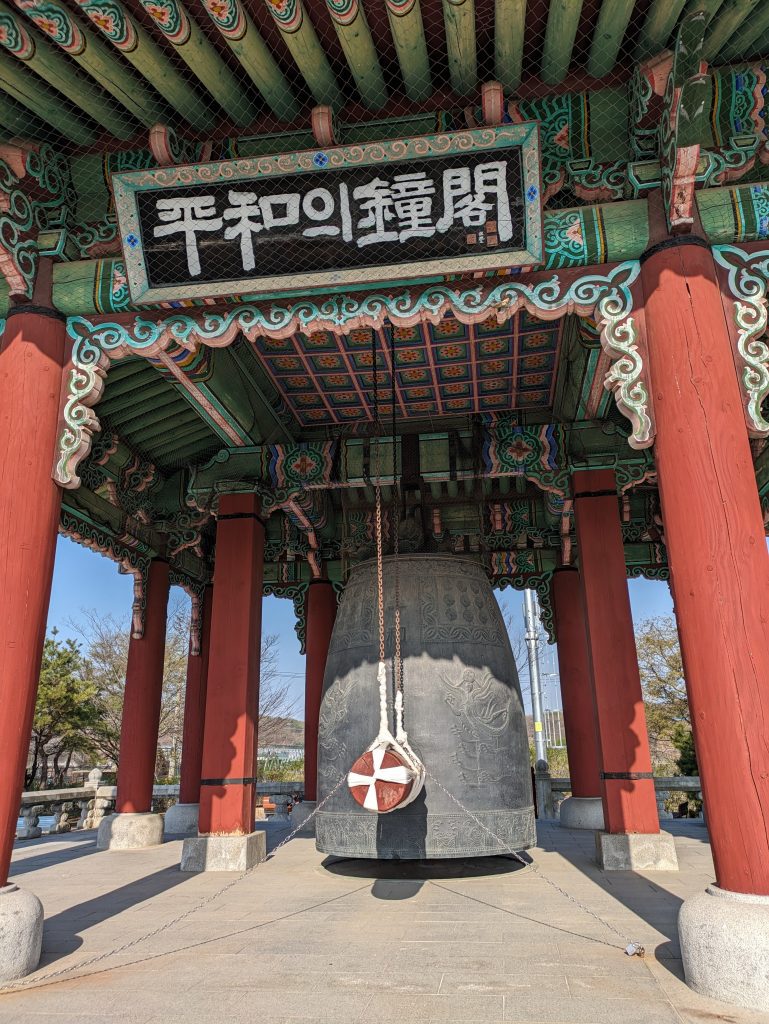
I probably wouldn’t have done this day trip if it wasn’t for my sisters. Honestly, I think it’s quite expensive for what you get. For those hoping to see the iconic blue huts, that requires a tour to the JSA area. Those tours weren’t running during my visit, and can be cancelled at very short notice. If you are super interested in North Korea, then you would probably really enjoy a day trip to the DMZ. I didn’t have time on my first trip to Seoul, and don’t feel like I missed out. It’s not something I would choose to do again. Hopefully, this post will help you figure out if it’s something you would enjoy.
Have you visited the DMZ? What did you think? Would you recommend it?
